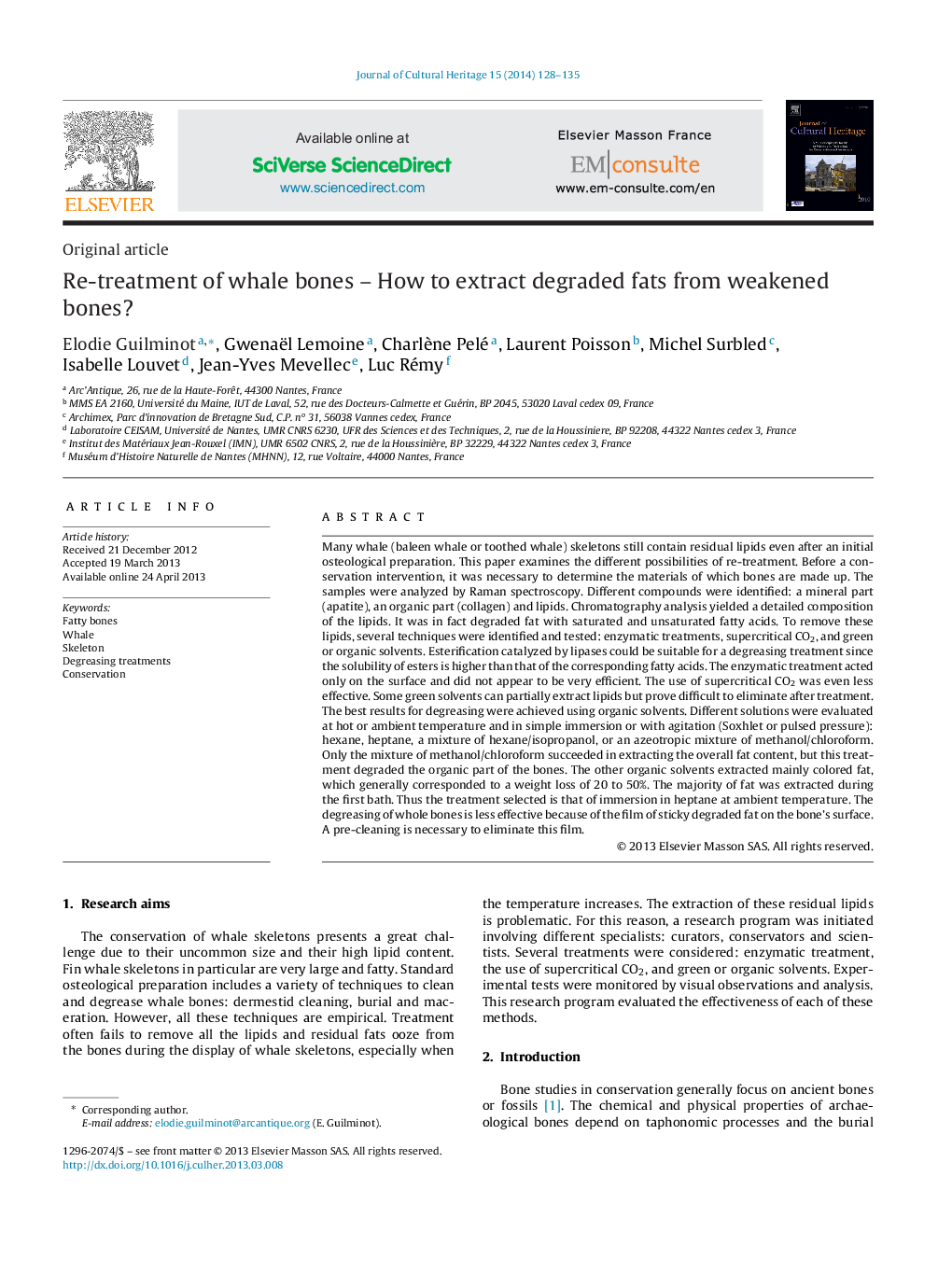| کد مقاله | کد نشریه | سال انتشار | مقاله انگلیسی | نسخه تمام متن |
|---|---|---|---|---|
| 1038214 | 944208 | 2014 | 8 صفحه PDF | دانلود رایگان |
عنوان انگلیسی مقاله ISI
Re-treatment of whale bones - How to extract degraded fats from weakened bones?
ترجمه فارسی عنوان
مجدد درمان استخوان های نهنگ - چگونگی استخراج چربی های تخریب شده از استخوان های تضعیف شده؟
دانلود مقاله + سفارش ترجمه
دانلود مقاله ISI انگلیسی
رایگان برای ایرانیان
کلمات کلیدی
استخوان چربی، نهنگ، اسکلت، درمان های تسکین دهنده چربی، حفاظت،
موضوعات مرتبط
مهندسی و علوم پایه
شیمی
شیمی تئوریک و عملی
چکیده انگلیسی
Many whale (baleen whale or toothed whale) skeletons still contain residual lipids even after an initial osteological preparation. This paper examines the different possibilities of re-treatment. Before a conservation intervention, it was necessary to determine the materials of which bones are made up. The samples were analyzed by Raman spectroscopy. Different compounds were identified: a mineral part (apatite), an organic part (collagen) and lipids. Chromatography analysis yielded a detailed composition of the lipids. It was in fact degraded fat with saturated and unsaturated fatty acids. To remove these lipids, several techniques were identified and tested: enzymatic treatments, supercritical CO2, and green or organic solvents. Esterification catalyzed by lipases could be suitable for a degreasing treatment since the solubility of esters is higher than that of the corresponding fatty acids. The enzymatic treatment acted only on the surface and did not appear to be very efficient. The use of supercritical CO2 was even less effective. Some green solvents can partially extract lipids but prove difficult to eliminate after treatment. The best results for degreasing were achieved using organic solvents. Different solutions were evaluated at hot or ambient temperature and in simple immersion or with agitation (Soxhlet or pulsed pressure): hexane, heptane, a mixture of hexane/isopropanol, or an azeotropic mixture of methanol/chloroform. Only the mixture of methanol/chloroform succeeded in extracting the overall fat content, but this treatment degraded the organic part of the bones. The other organic solvents extracted mainly colored fat, which generally corresponded to a weight loss of 20 to 50%. The majority of fat was extracted during the first bath. Thus the treatment selected is that of immersion in heptane at ambient temperature. The degreasing of whole bones is less effective because of the film of sticky degraded fat on the bone's surface. A pre-cleaning is necessary to eliminate this film.
ناشر
Database: Elsevier - ScienceDirect (ساینس دایرکت)
Journal: Journal of Cultural Heritage - Volume 15, Issue 2, MarchâApril 2014, Pages 128-135
Journal: Journal of Cultural Heritage - Volume 15, Issue 2, MarchâApril 2014, Pages 128-135
نویسندگان
Elodie Guilminot, Gwenaël Lemoine, Charlène Pelé, Laurent Poisson, Michel Surbled, Isabelle Louvet, Jean-Yves Mevellec, Luc Rémy,
